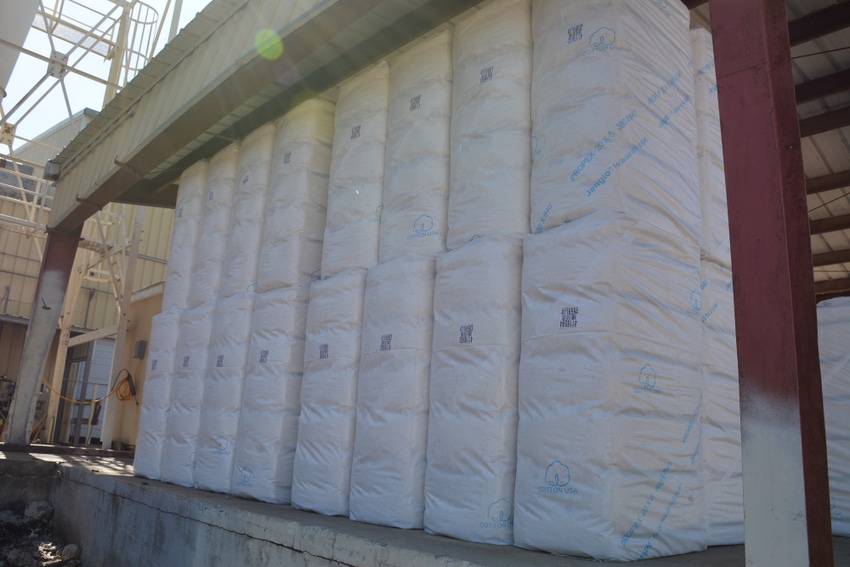
Back when I was in high school there was a movie called “The China Syndrome,” about a nuclear meltdown. A few days ago, on April 4, the real country of China did something that started off looking like a nuclear meltdown of U.S. stock and agricultural commodity markets.
With a few more days of market reaction under our belts, it may not turn out to be so bad.
What China did was include cotton and soybeans on a list of 106 U.S. export commodities on which they are threatening to impose 25 percent tariffs. This is in addition to 128 other U.S. export products previously listed by China. These announcements have been unveiled in apparent tit-for-tat reaction to U.S. government announcements of tariffs on Chinese products imported into the U.S.
China’s April 4 announcement that included U.S. cotton was initially met by a 3-cent plunge in the overnight trading of nearby ICE cotton futures contracts, which only recovered a little bit in that session, settling down over 2 cents. The U.S. stock market similarly was poised to open down 500 points, but ended up rallying 700 points to close up 230 points. In subsequent days the old crop ICE futures contracts rose back above 82 cents.
MARKETS HATE UNCERTAINTY
Why all this volatility? The first explanation involves the old adage that markets hate uncertainty. Waking up to a dramatic announcement about potentially changing fundamentals is a shock, so it wasn’t surprising to see a sharp drop in stock and commodity futures markets.
But, what about the actual risk to fundamentals? On the face of it, a 25 percent Chinese tariff on U.S. cotton imports would make U.S. cotton relatively more expensive than its competitors. I consider our relevant competitors to be suppliers of high quality, machine harvested cotton like Australia and Brazil.
So, the U.S. could lose market share to China. Does that imply an overall reduction in U.S. exports? The answer is — surprise! — a bit complicated.
If it really happens, the imposition of a tariff might result in some short-term disruption of the export market. New export sales of U.S. cotton to China might drop off. Existing sales to China might be cancelled. But, after some adjustment, the overall effects may not be as bad.
RESHUFFLING OF EXPORTS
First, if Australia and Brazil increase their exports to China, that might create a gap that the U.S. could fill in other countries that were expecting to import Australian or Brazilian cotton. This suggests that the effect of bilateral tariffs may simply be a reshuffling of cotton exports, not a reduction.
There is a recent precedent for this kind of reshuffling in the world cotton supply chain. After 2011, the Chinese disrupted their own domestic cotton industry with high-priced purchases of subsequently unavailable cotton for their reserve buildup. Chinese textile mills were having difficulty sourcing affordable cotton supplies.
The result was a shift to increasing cotton imports by Vietnam, Indonesia, Pakistan, and other countries, which then exported duty-free cotton yarn to China. The same kind of pattern shift could keep U.S. exports from ultimately declining in the wake of a bilateral Chinese tariff on U.S. cotton imports.
Because U.S. cotton futures did not crash, I am assuming that the Chinese announcement of possible tariffs has not spooked the hedge fund longs who still own a lot of ICE cotton futures.
These fund managers, like other traders on Wall Street, may be assuming that all the tit-for-tat announcements are just posturing for the eventual negotiation between the U.S. and China on larger trade issues. Let us hope that is the case.
GEOPOLITICS AND ECONOMICS
These kinds of risks are something that the U.S. cotton industry has to live with, because it is part of a global market, which includes geopolitics as much as economics.
The unpredictability of such things highlights the fact that nobody ultimately knows which way cotton prices will go. The only thing you can know for sure is whether a forward contract or a hedge on today's futures price will be a profitable — or at least survivable — price floor.
For additional thoughts on these and other cotton marketing topics, please visit my weekly on-line newsletter at http://agrilife.org/cottonmarketing/
About the Author(s)
You May Also Like




